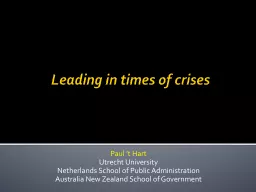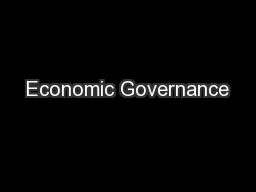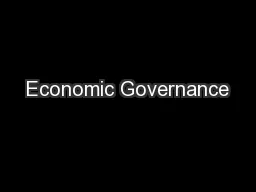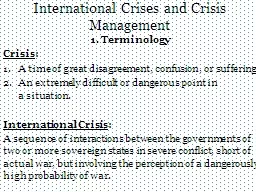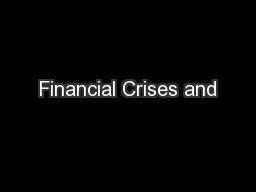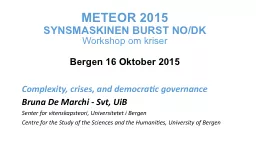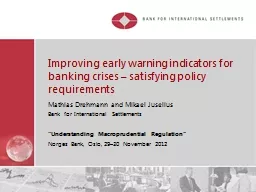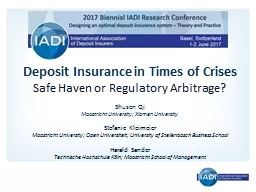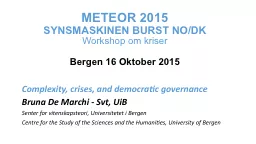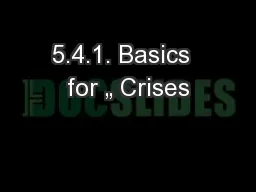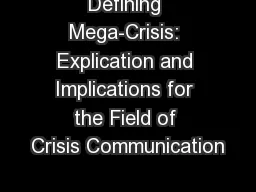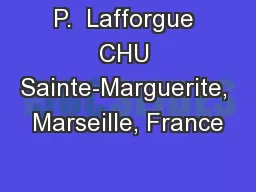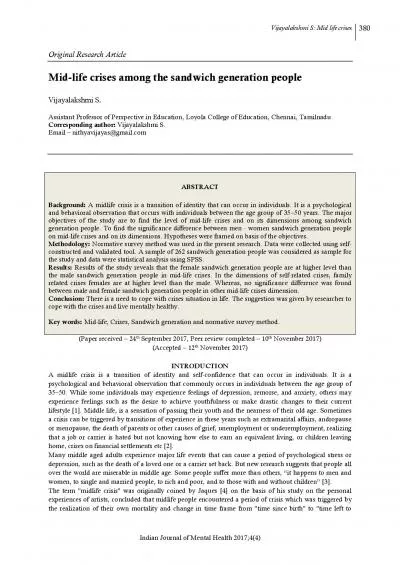PPT-Leading in times of crises
Author : cheryl-pisano | Published Date : 2017-11-19
Paul t Hart Utrecht University Netherlands School of Public Administration Australia New Zealand School of Government Emergencies and critical incidents official
Presentation Embed Code
Download Presentation
Download Presentation The PPT/PDF document "Leading in times of crises" is the property of its rightful owner. Permission is granted to download and print the materials on this website for personal, non-commercial use only, and to display it on your personal computer provided you do not modify the materials and that you retain all copyright notices contained in the materials. By downloading content from our website, you accept the terms of this agreement.
Leading in times of crises: Transcript
Download Rules Of Document
"Leading in times of crises"The content belongs to its owner. You may download and print it for personal use, without modification, and keep all copyright notices. By downloading, you agree to these terms.
Related Documents

